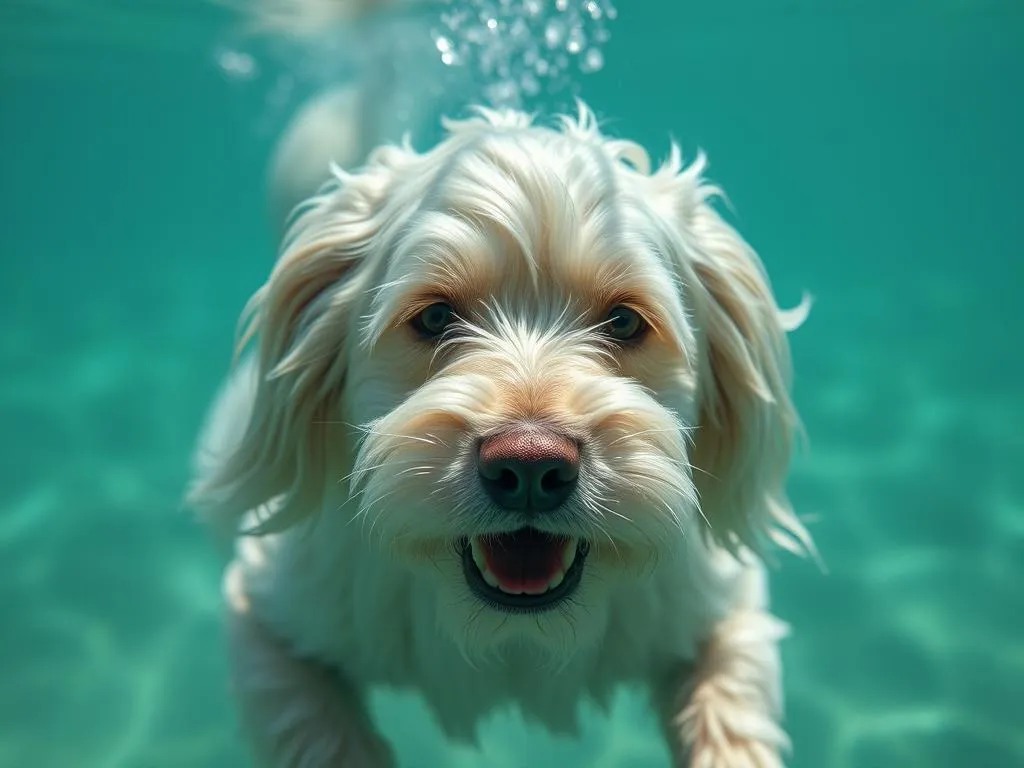
Introduction
Dog health care is an essential aspect of responsible pet ownership, encompassing everything from regular veterinary check-ups to nutrition and exercise. Among the various forms of exercise, swimming stands out as a fantastic low-impact activity that benefits a dog’s physical and mental well-being.
In this article, we focus on the Maltese breed, a small, lively dog known for its charming personality and beautiful long coat. With unique characteristics that influence their swimming abilities, Maltese dogs present an intriguing case for pet owners curious about their swimming potential.
The purpose of this article is to explore how well a Maltese can swim, discussing their swimming capabilities, health benefits, training methods, and safety measures. Understanding these factors will help you make informed decisions about your Maltese’s health and well-being.
Understanding the Maltese Breed
Physical Characteristics
The Maltese is a toy breed, typically weighing between 4 to 7 pounds. They are known for their elegant appearance, featuring a long, flowing white coat that requires regular grooming to prevent tangles and matting. Their small size and lightweight frame can influence their swimming ability, as smaller dogs often have a different buoyancy compared to larger breeds.
Maltese dogs have a compact body shape, short legs, and a relatively flat skull. These features can be advantageous for swimming but might also present challenges. For instance, their lightweight build can make it easier for them to float, while their short legs may impact their paddling efficiency in the water.
Temperament and Behavior
Maltese dogs are known for their playful and affectionate nature. They are highly social and often bond closely with their owners, making them excellent companions. However, their small size and energetic behavior can lead to certain health issues, such as dental problems and patellar luxation.
Understanding the temperament of a Maltese is crucial when considering swimming. Some may take to the water naturally, while others might be more hesitant. It’s essential to keep their personality in mind when introducing them to swimming.
Can Maltese Dogs Swim?
Natural Swimming Ability
Most dogs have a natural instinct to swim, a trait inherited from their ancestors. However, the swimming ability varies significantly among breeds, influenced by physical characteristics like body shape and size.
Maltese dogs, due to their diminutive size, may not be natural swimmers like larger breeds such as Retrievers or Labradors. Their body shape, which is not specifically designed for swimming, means that they may struggle to stay afloat or paddle effectively in deeper waters.
Individual Variations
While breed characteristics provide a general idea of swimming capabilities, individual variations play a significant role. Factors such as age, health, and previous experiences with water can influence how well a Maltese can swim.
For example, a young, healthy Maltese that has been gradually introduced to water may take to swimming with enthusiasm. In contrast, an older dog or one with pre-existing health conditions may find swimming more challenging.
Health Benefits of Swimming for Dogs
Physical Benefits
Swimming offers numerous physical benefits for dogs, including:
-
Cardiovascular Health: Swimming is an excellent cardiovascular workout, helping to strengthen the heart and improve overall endurance.
-
Muscle Strengthening and Toning: The resistance of water provides an effective way to tone muscles without the stress of impact that comes from running or jumping.
-
Weight Management: For overweight Maltese, swimming can be an effective way to burn calories while being gentle on their joints.
Mental Benefits
Beyond physical advantages, swimming offers mental benefits for dogs:
-
Stress Relief and Anxiety Reduction: Water can have a calming effect, helping to reduce anxiety in dogs. Swimming can be a great way for Maltese to blow off steam and relieve stress.
-
Socialization Opportunities: Swimming is often a social activity, allowing dogs to interact with other pets and people, which can contribute to their overall well-being.
Teaching a Maltese to Swim
Preparing for the Water
Before introducing your Maltese to swimming, ensure you take appropriate safety precautions.
-
Safety Precautions: Consider using a dog life jacket, especially for inexperienced swimmers. Always start in shallow areas where your Maltese can stand comfortably.
-
Choosing the Right Environment: Opt for a dog-friendly environment, such as a calm pool or a shallow lake. Avoid rough ocean waves or crowded beaches initially.
Step-by-Step Training Guide
Introducing your Maltese to swimming can be a rewarding experience. Here’s a step-by-step training guide:
-
Introduction to Water: Begin by letting your Maltese explore the water at the edge. Allow them to get comfortable with the sensation without forcing them in.
-
Gradual Acclimatization Techniques: Gradually lead your Maltese deeper into the water, ensuring they can still touch the bottom. Allow them to paddle around while remaining close to you for reassurance.
-
Encouragement and Positive Reinforcement: Use treats and praise to encourage your Maltese. Celebrate small victories, such as dipping their paws in the water or swimming a short distance.
Safety Tips for Swimming with a Maltese
Monitoring Health Conditions
Before swimming, it’s crucial to consider any potential health issues your Maltese may have. Common problems include:
-
Respiratory Issues: Maltese may be prone to respiratory problems, which can affect their ability to swim safely.
-
Heart Conditions: Ensure your dog is in good heart health before engaging in strenuous activities like swimming.
Watch for signs of distress while swimming, such as excessive panting, difficulty keeping afloat, or reluctance to enter the water.
Water Safety Measures
Supervision is key when swimming with your Maltese. Here are some essential safety tips:
-
Importance of Supervision: Always keep a close eye on your dog while they are in the water. Never leave them unattended.
-
Tips for Keeping Your Maltese Safe in the Water: Make sure to have a designated exit point for your Maltese to easily get out of the water. Also, avoid swimming in strong currents or rough waves that could overwhelm them.
Alternative Water Activities
Dog-Friendly Water Games
If swimming isn’t an option or if your Maltese isn’t comfortable in the water, consider engaging in dog-friendly water games:
-
Fetch and Retrieval Games: Toss a floating toy into shallow water and encourage your Maltese to retrieve it. This can be a fun way to engage them without deep swimming.
-
Floating Toys and Obstacles: Create a mini obstacle course using floating toys to stimulate your Maltese’s curiosity and encourage play.
Hydration and Cooling Off
It’s essential to keep your Maltese hydrated, especially on warm days. Ensure fresh water is available for them during and after swimming.
If swimming isn’t feasible, consider alternative ways to keep your Maltese cool, such as setting up a kiddie pool or using a dog-friendly sprinkler.
Conclusion
In summary, while Maltese dogs may not be natural swimmers like some larger breeds, they can learn to enjoy swimming with the right approach and precautions. Swimming offers numerous health benefits, both physical and mental, making it a worthwhile activity for your Maltese.
By understanding their unique characteristics and following safe practices, you can provide your Maltese with a fun and beneficial swimming experience.
Frequently Asked Questions (FAQs)
Are Maltese dogs good swimmers?
Maltese dogs can swim, but their small size and physical characteristics may make it more challenging compared to larger breeds. With proper training and supervision, many Maltese can enjoy the water.
What should I do if my Maltese is afraid of water?
If your Maltese is hesitant about water, take it slow. Introduce them to water gradually, using treats and positive reinforcement to build their confidence.
How often should I take my Maltese swimming?
The frequency of swimming can vary based on your Maltese’s comfort level and health. Start with short sessions a few times a week and adjust based on their response.
Can swimming help with my Maltese’s weight issues?
Yes, swimming is an excellent low-impact exercise that can help manage your Maltese’s weight while being gentle on their joints.
What age can a Maltese start swimming?
Generally, you can introduce your Maltese to swimming as early as six months, but consult with your veterinarian to ensure they are healthy enough for water activities.
This concludes our comprehensive look at the swimming abilities of Maltese dogs and their health care considerations. Remember, responsible pet ownership includes ensuring your pet’s safety and well-being, both in and out of the water. Enjoy swimming with your Maltese!









